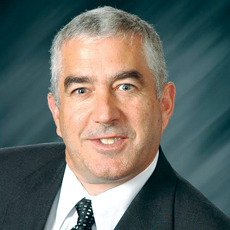
Residents of long-term care facilities expect clean towels and bedding, but likely don’t wonder about what goes on behind the scenes — and they shouldn’t have to. Providing a steady supply of clean linens and staying compliant with industry standards, all while keeping operating costs low, is the manager’s job. If you haven’t looked at the big picture recently, consider these five tips — and state-of-the-art technologies — to help increase efficiency. The benefits of a well-oiled operation will appear in more places than spotless, long-lasting linens.
1. Be in control.
Advanced control systems and wireless networking technologies give managers the ability to ensure labor and other operational costs are at their lowest, and remotely monitor their operations from any Internet-connected computer. OPL managers who use this feature can instantly view performance reports including energy and water usage, access machine service history logs, and execute many other time- and money-saving tasks.
For example, managers can pull a report to review start, stop and idle times for easy labor monitoring, check actual drain and fill times or maximum temperatures reached to monitor quality, and then use this data as a training tool to make modifications to their operations and workforce. These controls can also document each cycle and highest water temperature with date and time stamps to keep facilities compliant with government standards. The result is more accurate output predictions and greater control of the laundry facility.
2. Spray, don’t just bathe.
When caring for linens in a long-term care setting, effective rinsing is a must. Any chemical residue left behind can cause linens to become stiff and rough, or worse, leave chemicals that can cause skin irritation and bed sores. Additionally, if wash formulas remain on linens during the drying process, the heat will cause them to yellow over time and compromise the original linen investment. Enter spray rinse technology, which can decrease the presence of residual wash chemistries by 22% compared to only a bath rinse. Unlike bath rinses, which dilute wash chemistry, unique spray rinse technology pulls chemicals through the load and down the drain, ultimately providing superior rinsing results. This method also uses up to 39 percent less water and can decrease cycle rinse time by up to 12%. To further reduce the possibility of wash chemicals remaining in linens during the drying process, operators should consider investing in a washer-extractor with 400 G-Force extraction, which will remove the maximum amount of water from the load.
3. Determine the best wash formula.
A wash formula will ultimately be rinsed away, but selecting the best mix for your market can make a big difference in the efficiency of your laundry operation. Wash formulas are fine-tuned according to temperatures in use and the types of soil and linens being cleaned, but they do the best job when partnered with washer-extractors that feature the technologies and programming capabilities that can also be tailored to different load types. New machines feature as many as 41 programmable wash cycles. Partnering with the right chemical company is key to creating the perfect wash formula. Work together to select a formula that satisfies health departments, while at the same time reduces energy costs and provides clean linens for residents.
4. Eliminate over-drying.
Tumble dryers account for 70% of a laundry operation’s utility expenses, so anywhere drying times can be reduced will alleviate costs. Using a washer-extractor with a high G-Force extraction rate is the single most effective way to reduce drying times, because it removes the maximum amount of water from a load before it even reaches the tumble dryer. Then, drying time can be reduced even further by utilizing a tumble dryer with over-dry prevention technology. Tumble dryers with this feature contain moisture sensors that automatically shut off the machine when precise levels of dryness are reached. While utility costs decrease, linens don’t suffer from the degradation that comes with overheating. This technology not only preserves the linen investment, but takes the guesswork out of dryness. Another common problem when drying bedding is the balling or roping of linens. When linens ball up, the outside of the ball often over-dries while the center remains damp. Typically, this error is not caught until after linens are removed, which decreases productivity and increases labor expenses. By utilizing a dryer with reversing technology, operators can prevent this from happening and ensure an even dry.
5. Consider replacement.
Is your equipment up to date? If you haven’t upgraded recently, old equipment could be costing you money in repair bills, machine downtime and lost efficiency. While labor, linen replacement and utility costs represent 66-87 percent of an OPL’s total budget, initial equipment costs represent just 8-12%. The amount of money a laundry room can save in operating costs by upgrading far outweighs the initial equipment investment—look at the big picture. High-capacity machines available today have been designed to handle large volumes, which increases an operation’s productivity by washing more loads in less time. State-of-the-art features including advanced controls, high extract speeds, and spray rinse and over-dry prevention technologies enable the laundry manager to focus on what residents care about — clean linens — and save thousands of dollars in utility, linen and labor costs for years to come.
Bill Brooks is the National Sales Manager for UniMac®, a leading provider of on-premises laundry equipment. He can be reached at [email protected] or 920-748-4437. For more information on UniMac, visit UniMac.com or call 1-800-587-5458.



